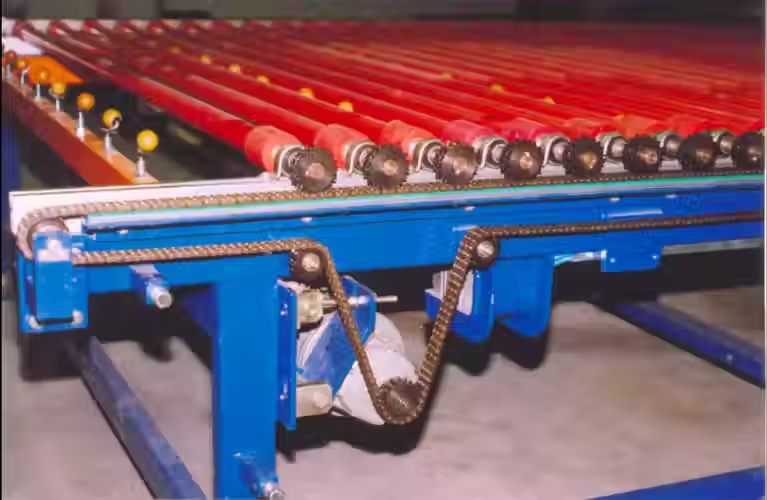Vibratory Feeder Manufacturers in Bangalore
- Jaswanth srinivas
- Oct 14, 2024
- 3 min read
Vibratory Feeder Manufacturers in Bangalore
A vibratory feeder is an industrial device used to feed materials in a controlled and consistent manner, primarily used in industries like packaging, pharmaceuticals, food processing, and manufacturing. Its main function is to transport and control the flow of bulk materials, such as powders, granules, or other small parts, from a hopper or bin into the processing equipment. Vibratory feeders are highly valued for their precision, low maintenance, and versatility, making them an integral component in various industrial automation systems.
Working Principle
A vibratory feeder works on the principle of vibration. The unit consists of a tray, trough, or bowl, typically made of stainless steel, and is mounted on springs. Underneath this tray is a set of unbalanced motors or electromagnets that create oscillations or vibrations when powered. The oscillations create forward motion, causing materials to move along the surface of the tray toward the desired destination. This movement can be fine-tuned to control the speed and consistency of the material flow.
There are two main types of vibratory feeders: electromagnetic and mechanical.
Electromagnetic Vibratory Feeders: These feeders use an electromagnetic drive system that provides precise control over material flow. The frequency and amplitude of the vibrations can be adjusted by changing the voltage and current supplied to the electromagnet. Electromagnetic feeders are ideal for small-scale applications or where fine control is needed.
Mechanical Vibratory Feeders: These feeders use a motor-driven mechanism, typically rotating an eccentric mass, to create vibrations. Mechanical feeders are often used for larger materials or higher-volume applications where precise control over the feed rate is not as critical.
Key Components
Feeder Tray: The tray or bowl, depending on the application, is where the material is placed. The size and shape of the tray are designed according to the material's properties and desired feed rate.
Drive Unit: This is the heart of the feeder, generating the vibrations that move the material. It can be electromagnetic or mechanical.
Controller: For electromagnetic feeders, a controller adjusts the vibration frequency and amplitude, allowing the operator to fine-tune the feeder’s performance.
Springs: The tray or bowl is typically mounted on leaf springs or coil springs, which allow it to vibrate without losing energy to its surroundings.
Applications
Vibratory feeders are highly adaptable and can be used across various industries:
Pharmaceuticals: To feed tablets, capsules, or powders into packaging or processing machinery.
Food Processing: To transport ingredients like grains, nuts, or other bulk materials.
Mining: To handle bulk materials like ores or aggregates.
Automotive and Manufacturing: To feed small parts or components into assembly lines.
Recycling: To separate and transport materials like plastic, metal, and glass for sorting and processing.
Advantages
Consistency: Vibratory feeders provide a uniform feed rate, which is crucial for maintaining process efficiency and product quality.
Precision: They can be adjusted to provide very precise control over the material flow, especially in electromagnetic models.
Versatility: Vibratory feeders can handle a wide range of materials, from fine powders to large, irregular objects.
Low Maintenance: These devices have few moving parts, which means less wear and tear and reduced maintenance requirements.
Energy Efficiency: Electromagnetic feeders, in particular, are energy-efficient as they only consume power during operation.
Hygiene: Many vibratory feeders, especially in food and pharmaceutical industries, are made from stainless steel and designed for easy cleaning and sanitation.
Disadvantages
Initial Cost: Vibratory feeders can have a high initial cost, particularly for specialized applications or custom-built units.
Noise: Mechanical feeders can produce noise due to the continuous movement and vibration.
Material Limitations: Some materials, especially sticky or highly viscous substances, may not flow as well in a vibratory feeder compared to other types of conveyors.
Conclusion
A Vibratory Feeder Manufacturers in Bangalore is a critical tool in material handling and processing industries, offering precise control, reliability, and efficiency. Whether for small-scale or large industrial applications, vibratory feeders help automate material handling tasks, ensuring a steady, consistent flow of materials into processing systems. The choice between electromagnetic and mechanical types depends on the specific needs of the application, such as feed rate control, material properties, and operational conditions.




Comments